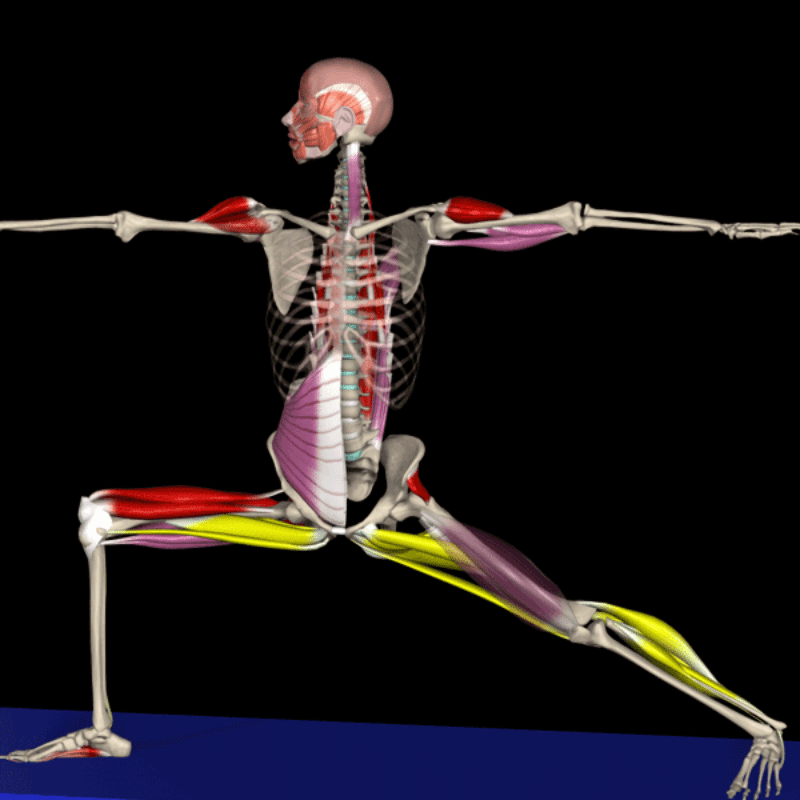In recent years, the integration of yoga as a complementary therapy in clinical settings has gained immense popularity. Clinicians increasingly recognize its potential as a powerful tool for rehabilitating individuals and treating musculoskeletal pain.
In this Muscle and Motion article, we delve into the benefits of incorporating yoga into rehabilitation programs, shedding light on how it can enhance flexibility, strength, balance, and mental well-being and support the overall rehabilitation and recovery process. (Liu et al., 2021)
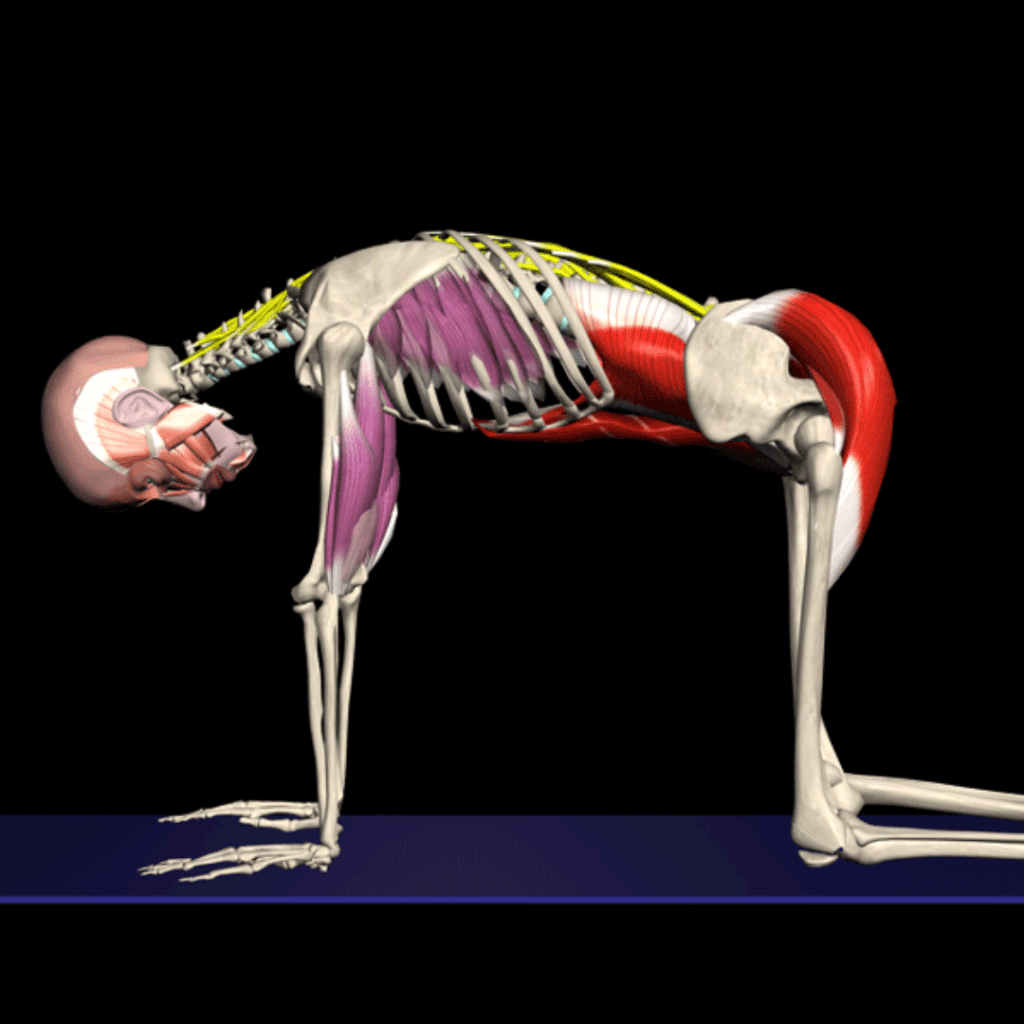
Improve mobility and range of motion
A key advantage of integrating yoga into musculoskeletal rehabilitation is its ability to increase flexibility and improve range of motion. After injuries, many individuals experience a decreased range of motion for various reasons. With its gentle stretches and pose sequences, yoga offers a gradual means to enhance flexibility by specifically targeting muscles and joints.
Consider a scenario where an individual is dealing with low back pain, making it challenging to move their lumbar spine comfortably. In such a situation, the cat-cow pose can prove to be advantageous. This pose facilitates the initial movement of the lumbar spine with reduced stress and discomfort, making it a beneficial choice for those experiencing lower back pain.
Strengthening muscles and joints
Yoga involves various poses that engage multiple muscle groups and joints. As individuals progress in their practice, they gradually build strength in these areas. This strengthening effect can be instrumental in regaining muscle strength and joint stability for those recovering from musculoskeletal injuries or conditions.
Improving balance and coordination
Balance and coordination are often compromised in individuals dealing with musculoskeletal issues. With its emphasis on body awareness, yoga can significantly improve these aspects. Poses that require balance, such as tree pose or warrior III, challenge individuals to find stability and improve their coordination. These gains in balance can reduce the risk of falls and subsequent injuries.
Reducing stress and enhancing well-being
In the context of pain and injury, it’s crucial to understand that a person’s level of stress and overall well-being can have a negative impact on their pain perception and their potential for recovery. The integration of yoga into rehabilitation goes beyond addressing physical aspects; it provides a safe space for individuals to alleviate stress and improve their mental well-being. By including mindful breathing and meditation techniques in yoga, individuals can reduce feelings of anxiety, depression, and overall stress.
Customizing yoga poses for musculoskeletal conditions
Now, let’s delve into the advantages of specific yoga poses tailored to various musculoskeletal conditions based on a comprehensive study conducted by Liu et al., 2021. The study measured the physical demands of five common -standing yoga asanas, providing valuable insights for tailored strength training in various musculoskeletal conditions.
- For knee osteoarthritis (OA) patients – chair pose:
The chair pose is particularly beneficial for individuals with knee OA. This pose focuses on strengthening the quadriceps while minimizing the knee adduction moment, making it an ideal choice for knee OA patients.
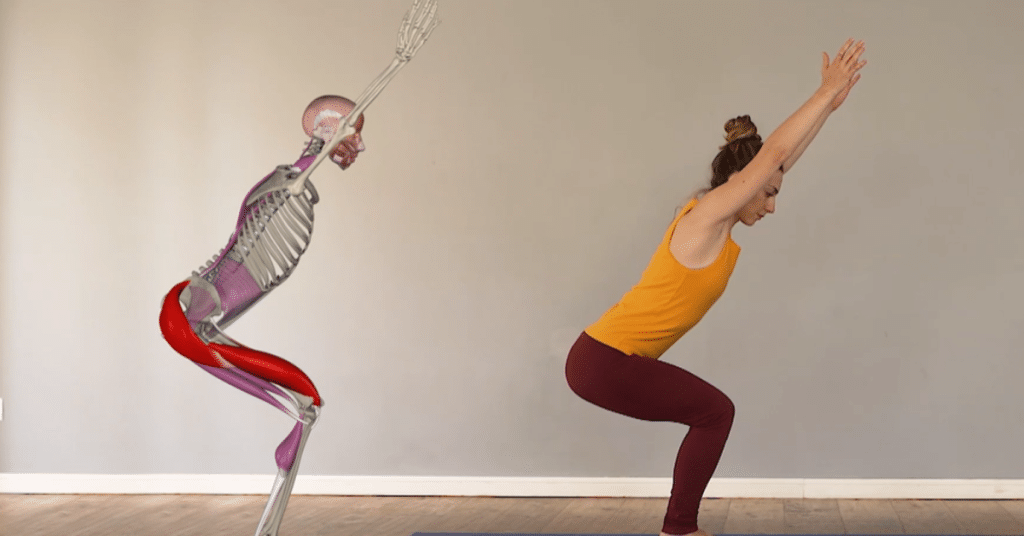
- For patellofemoral pain patients – warrior i:
Patients with chondromalacia patellae can benefit from warrior 1. This pose offers robust strengthening effects on the quadriceps femoris muscle, which is especially advantageous for this condition.
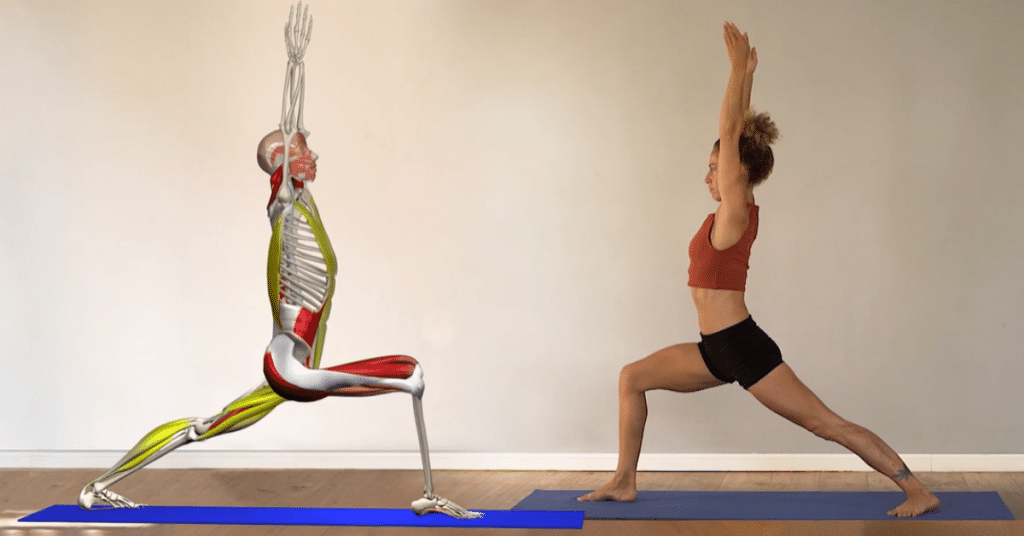
- For hip osteoporosis patients – caution with warrior ii:
Individuals with hip osteoporosis should exercise caution with warrior ii due to the extreme hip external rotation required. This rotation may put stress on the hip joint, making it potentially unsuitable for this group.
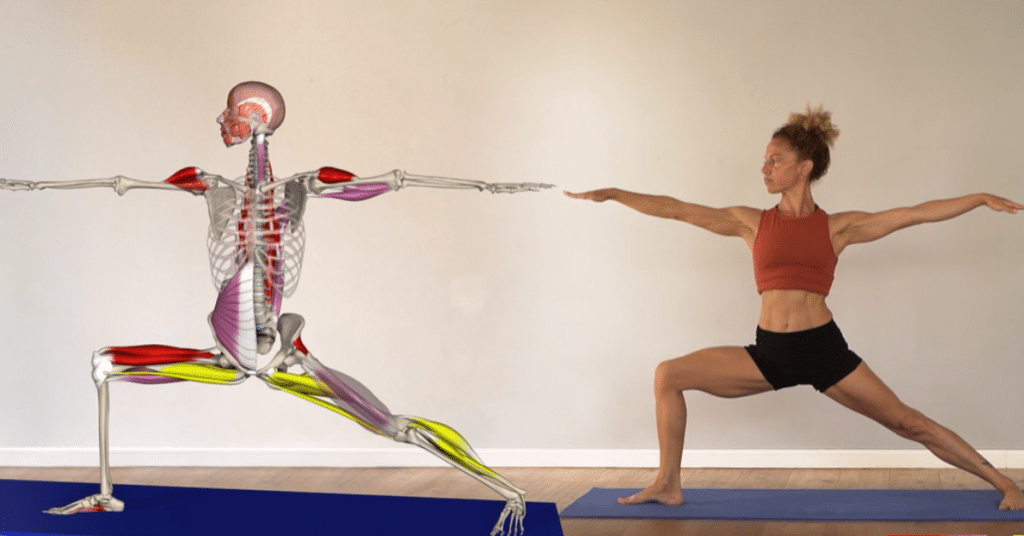
- For hip osteoarthritis (OA) patients – considerations for warriors:
Warrior i and warrior ii poses may not be advisable for individuals dealing with hip osteoarthritis, primarily due to the significant hip joint moments of fForce they exert. Especially for those who experience severe pain from hip osteoarthritis, clinicians may opt for exercises that encourage joint movement rather than static poses that exert pressure on the joint. This approach minimizes potential provocations, which can be particularly discomforting during certain stages of the condition.
- For recurrent hamstring strain patients – warrior iii:
Warrior iii has been identified as particularly beneficial for hamstring training. Its positive effects make it the top choice among the standing asanas for individuals rehabilitating recurrent hamstring strain.
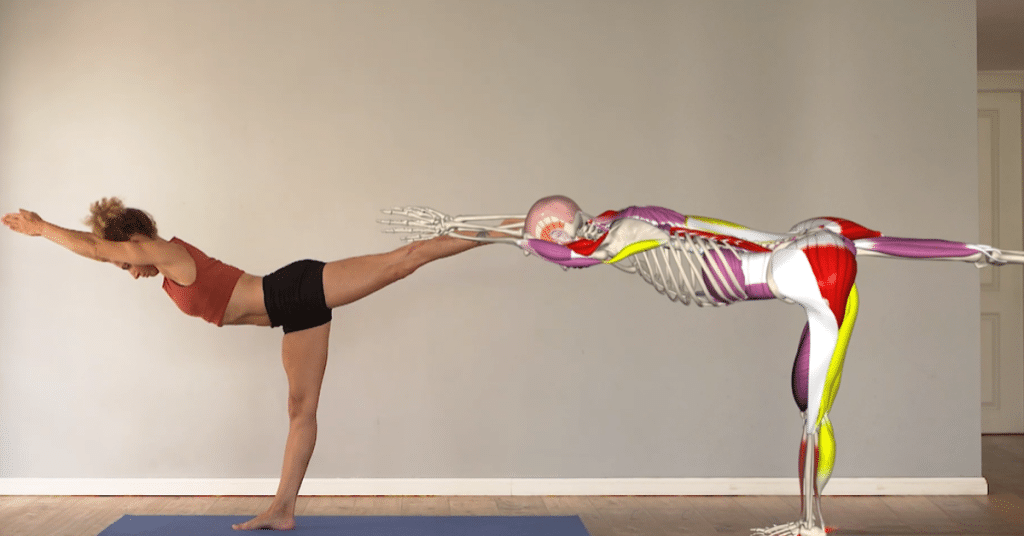
- Balance concerns – tree pose with support:
Senior yoga practitioners who experience balance challenges can enhance their standing balance by practicing the tree pose with a wall or chair support. This provides essential lateral stability during the pose.
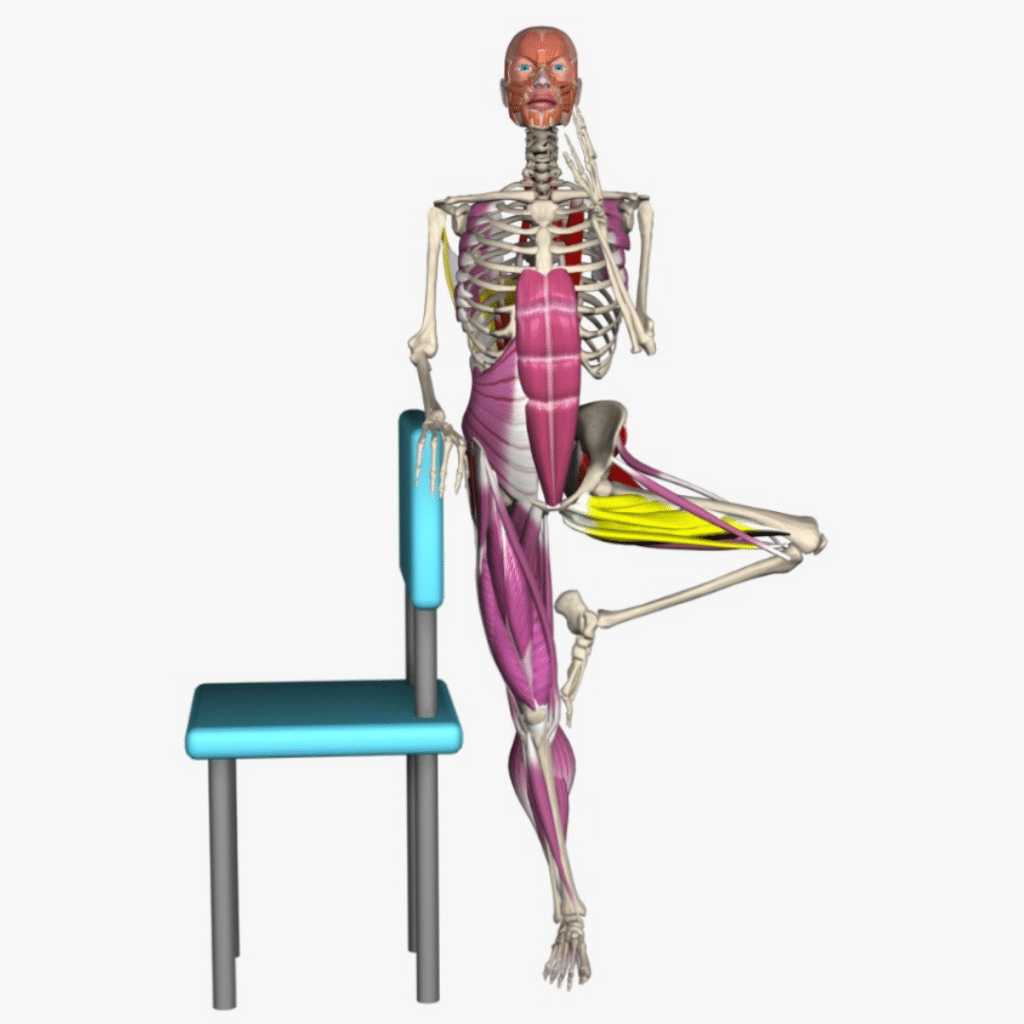
In summary, incorporating yoga into clinical rehabilitation programs offers a holistic approach to musculoskeletal pain management. It addresses the physical aspects of recovery by enhancing flexibility, strength, and balance while providing valuable mental and emotional support. Clinicians and patients alike embrace the profound benefits of yoga, with a deep understanding of the adjustments to make in different musculoskeletal conditions.
Take your YOGA to the next level with Dr. Gill Solberg & Muscle and Motion‘s YOGA APP.
An invaluable resource for yoga teachers and yogis seeking to develop a comprehensive understanding of the muscles and joints used in each asana
Sign up for free!
Reference:
Liu, A.-M., Chu, I.-H., Lin, H.-T., Liang, J.-M., Hsu, H.-T., & Wu, W.-L. (2021). Training benefits and injury risks of standing yoga applied in musculoskeletal problems: Lower limb biomechanical analysis. International Journal of Environmental Research and Public Health, 18(16), 8402.
Rai, S., Gupta, T., Gupta, G., Kale, A., Arora, R., & Kumar, D. (2022). Comparative study of role of physiotherapy alone versus physiotherapy combined with yoga in rehabilitation after a sports injury. What can a primary physician offer? Journal of Family Medicine and Primary Care, 11(12), 7691.
